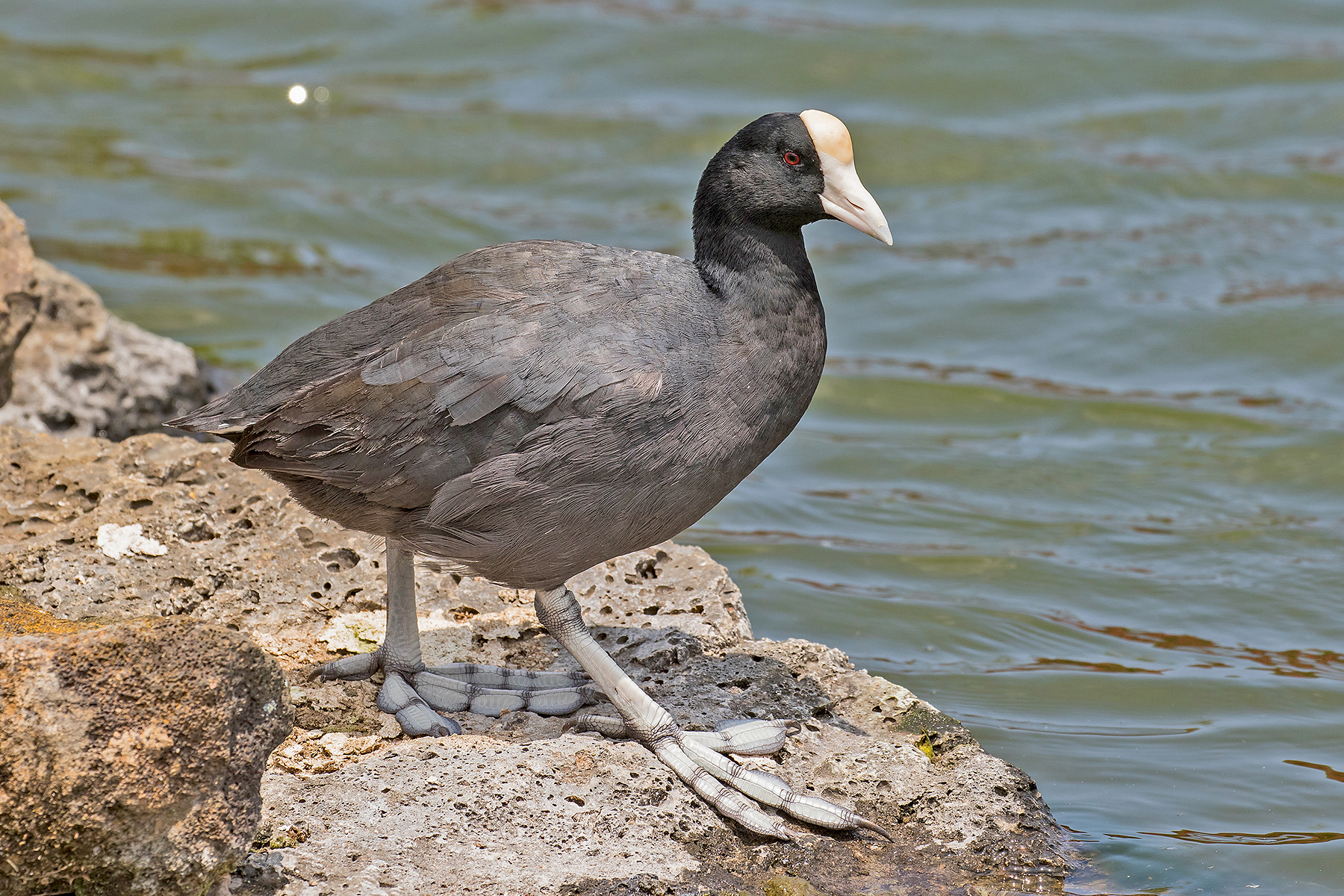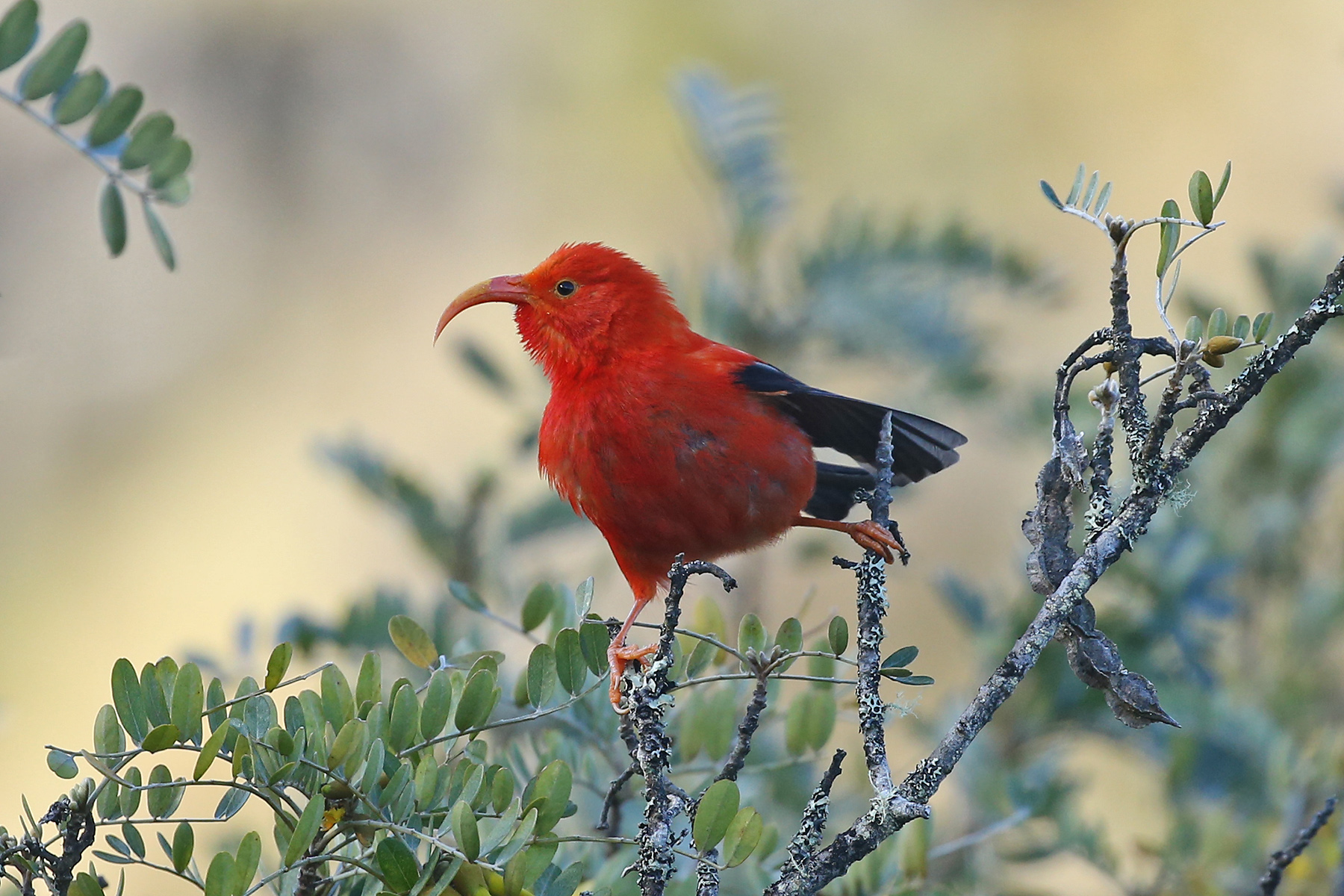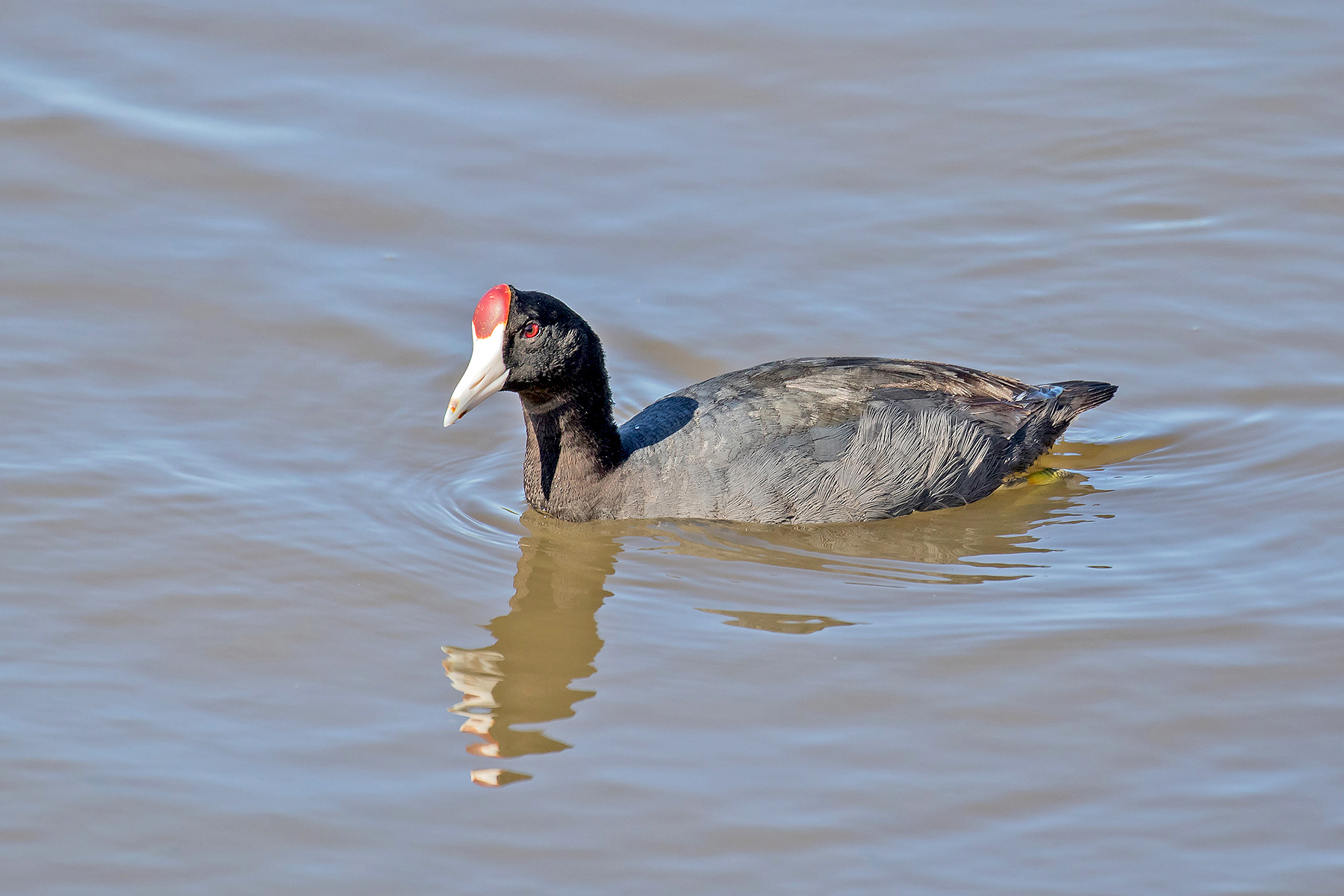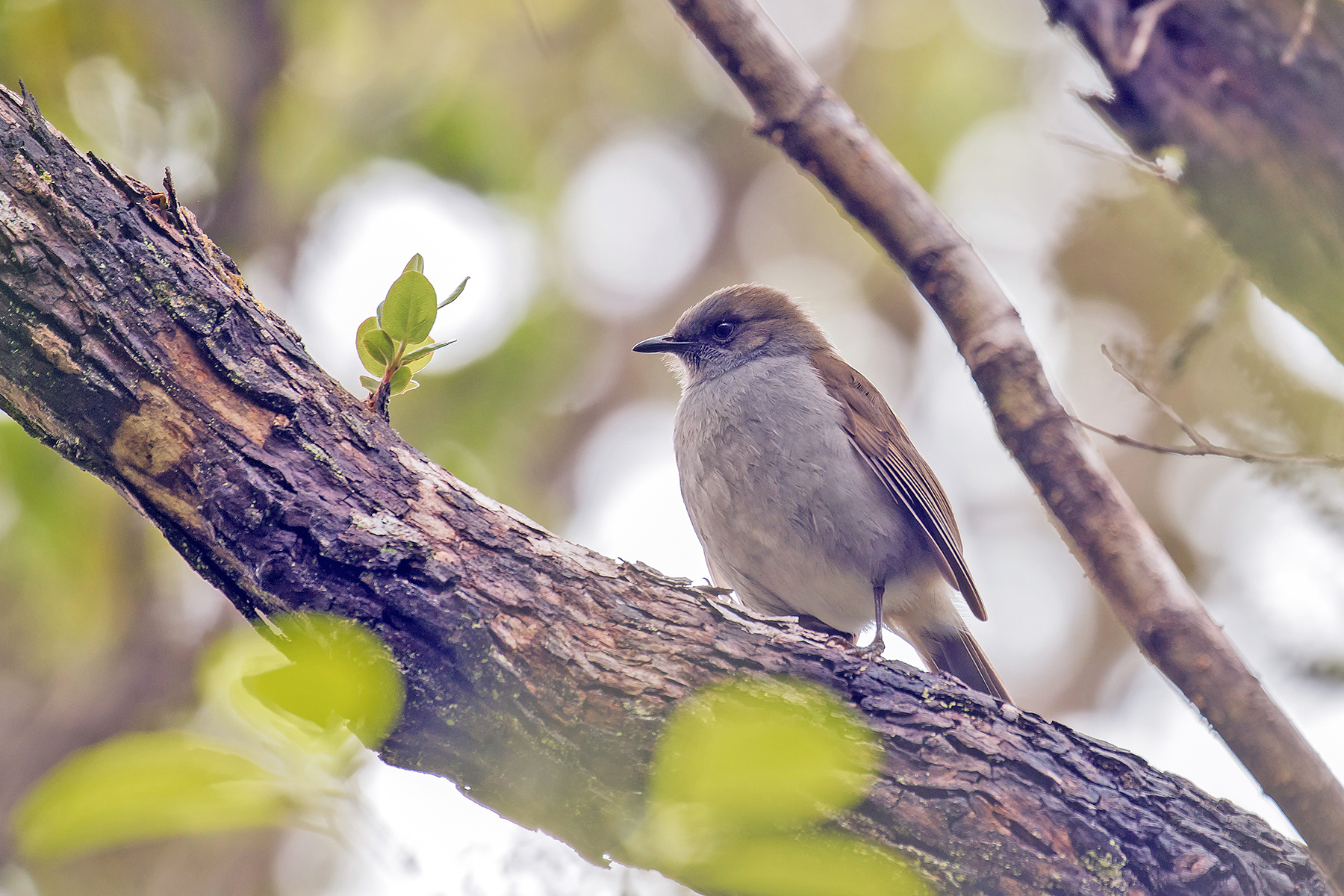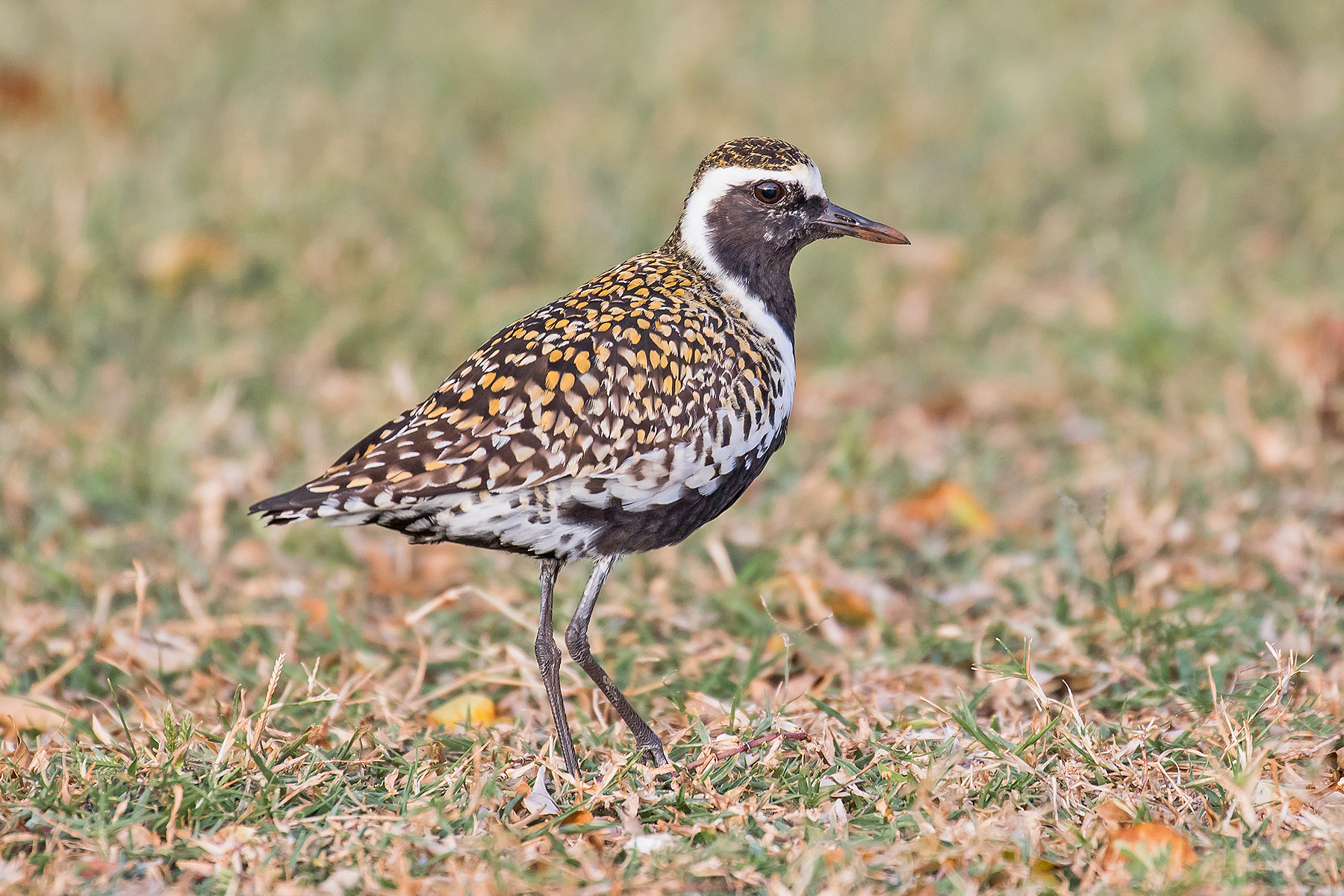HAWAII BIRDING TOUR: DETAILED ITINERARY
Hawaii: Day 1 Our Hawaii birding tour begins this evening at our Honolulu hotel on the island of Oahu, where we will spend two nights.
Hawaii: Day 2 Early this morning we will visit a small, secluded valley which holds the highest concentration of the endemic Oahu Elepaio (the elepaios are closely related to the monarch flycatchers) as well as the endemic Oahu Amakihi. In addition, we should see two introduced species: the smart White-rumped Shama and the multi-hued Red-billed Leiothrix.
We will then drive around the scenic north coast of Oahu and visit several ponds and marshes around Kailua and the James Campbell National Wildlife Refuge. Breeding species in these wetlands include the endemic Hawaiian Coot and the endemic Hawaiian Stilt, as well as Black-crowned Night Heron, Western Cattle Egret and the introduced Red Avadavat. The wetlands also attract migratory wildfowl such as Northern Pintail and Northern Shoveler. More importantly, we should encounter the rare Bristle-thighed Curlew, as small numbers occur here throughout the year (with young birds oversummering rather than returning to Alaska).
Seawatching along the coast is likely to turn up good numbers of Red-footed and Brown Boobies and Sooty Terns, White Tern, Wedge-tailed Shearwater and, if we are very fortunate, Christmas (or Kiribati) Shearwater. With luck, we will see some rare Hawaiian Monk Seals hauled out on the beaches.
During our visit to Oahu, we should also encounter a number of introduced bird species like Spotted and Zebra Doves, Red-vented Bulbul, Common Myna, Northern Cardinal, Japanese White-eye, House Finch, Yellow-fronted Canary and Java Sparrow. Wintering Pacific Golden Plovers often feed on the lawns.
Hawaii: Day 3 After some final birding on Oahu we will fly to Lihue on Kauai, the oldest and greenest of the main islands, for a three nights stay. This afternoon we will begin our exploration of the island.
Hawaii: Days 4-5 During our time on Kauai we will visit Kilauea Point National Wildlife Refuge (better known under the name Kilauea Lighthouse), which is the best place in the Hawaiian Islands for seabirds. Here we will find a huge colony of gorgeous Red-footed Boobies and their nests can easily be discerned in the trees on the steep forested cliffs. Small numbers of the enormous Laysan Albatross breed here too and the population is still on the increase. Both these species have no fear whatsoever of man and can often be observed at very close range whilst manoeuvring in the wind along the cliffs.
Recently the Nene or Hawaiian Goose, Hawaii’s State bird, has been reintroduced here and good numbers can now be found. We can also expect to see Wedge-tailed Shearwaters, Brown Boobies, Great Frigatebirds and White-tailed and Red-tailed Tropicbirds. We may well discover some Green Turtles amongst the impressive breakers or even the threatened Hawaiian Monk Seal. In recent years Kermadec Petrels have begun to visit the colony, so we may be lucky enough to see this agile species overhead.
We will also pay a visit to an agricultural area, where the main crop is taro. Mudflats and freshwater ponds abound in this area and these provide a habitat for migratory shorebirds and the endemic Kaloa or Hawaiian Duck. At another area, which we will explore only briefly, Grey-tailed Tattler and the introduced Northern Mockingbird, Western Meadowlark and Chestnut Mannikin (or Black-headed Munia) can be found.
Much of our time on Kauai will be spent exploring the richly forested mountains. As we make our way along the winding road into the interior we will enjoy spectacular views of the Hanapepe Valley and the Waimea Canyon. The latter is one of Hawaii’s great scenic wonders and is often called the ‘Grand Canyon of the Pacific’. White-tailed Tropicbirds constantly glide on the updrafts in the canyon. At the end of the road, amidst extraordinary forests, we will search for endemics like Kauai Elepaio, Anianiau, Kauai Amakihi (which has a noticeably larger bill than other amakihis), Apapane and Iiwi. Introduced species like Common Pheasant, Red Junglefowl (Hawaii’s first introduced bird) and Chinese Hwamei can also be found in these forests.
Our hike will take us to the edge of the Alakai Wilderness Preserve, a huge almost impenetrable forest, often immersed in cloud, where the sun rarely penetrates. The trail is rather slippery in parts, but gradually becomes much better. Here we will diligently search the moss-encrusted trees for the rare Akikiki or Kauai Creeper. This rapidly declining and critically endangered Kauai endemic acts like a nuthatch and can be difficult to locate, but this area is the best accessible spot to find this enigmatic species. We will also be wanting to find the unobtrusive Akekee here, although numbers have dropped in recent years so it is becoming much harder to encounter. Another speciality of these beautiful moss-encrusted forests is the ultra-rare and fast-declining Puaiohi, one of Hawaii’s two surviving thrushes, which may now be reduced to only 10-20 individuals!
Seawatching from the coast can, with a bit of good fortune, turn up Newell’s Shearwater and Hawaiian Petrel.
Either here at Kauai or alternatively during our stay on Big Island (Hawaii), we will take a pelagic trip, primarily to try and get a good view of Hawaiian Petrel, although this is by no means certain. Newell’s Shearwater is also a possibility. Regular species include Wedge-tailed Shearwater, Brown and Red-footed Boobies, White-tailed Tropicbird, Sooty Tern, and Brown and Black Noddies. In addition, there is always the chance of turning up a rarity or two. Possibilities include Mottled and Bulwer’s Petrels, Sooty and Christmas Shearwaters, Grey-backed (or Spectacled) Tern and all three jaegers (skuas). We may also see a few cetaceans, such as Spinner Dolphin or Short-finned Pilot Whale.
Hawaii: Day 6 After some final birding on Kauai we will take an afternoon flight to Maui for an overnight stay. A nocturnal excursion should allow us to hear and see the rare Hawaiian Petrel, which nests on Maui.
Hawaii: Day 7 The drive up to the Haleakala crater is very scenic and introduced Chukar often frequent the roadsides, while Eurasian Skylarks will be in song flight above the pastures. We will first make our way to the summit at 3055m, as the crater tends to fill with clouds as the day progresses. The magnificent panoramic view from here into the immense crater reveals a seeming moonscape where the famously photogenic silversword (a plant somewhat reminiscent of Africa’s giant lobelias) grows, while in the distance the looming bulk of Big Island can be seen far to the southeast. The Nene or Hawaiian Goose can often be found here. This odd-looking goose had nearly become extinct by the 1940s, but was saved by a worldwide conservation effort and can be found also on Kauai and the Big Island.
Further down we will visit an area of eucalyptus, pines and acacias, where we should encounter several species of Hawaiian honeycreeper, including a Maui endemic, the Maui Alauahio (or Maui Creeper). In addition, we should see the secretive Japanese Bush Warbler.
Late this afternoon we will take a short flight to Hilo on the island of Hawaii, also known as Big Island, for a four nights stay.
Hawaii: Days 8-10 During our stay on Big Island we will explore several different areas. At the famous Saddle Road, we will concentrate on the kipukas, which are islands of older forest surrounded by fairly recent lava flows. These nearly pristine fragments of forest hold several species of Hawaiian honeycreeper, a dark form of the Hawaii Elepaio and the Omao or Hawaiian Thrush, an unobtrusive species, whose loud song can be heard all around. In addition, we are likely to encounter the rare Akiapolaau with its unique and amazing bill as this area is undoubtedly the best place to find this remarkable species.
We will also explore the mamane-naio forest on the leeward slope of Mauna Kea at an altitude of about 2300m. This is the home of the critically endangered Palila, a striking finch-like Hawaiian endemic that feeds almost exclusively on the pods of the green mamane. Hawaii Amakihi is abundant here and we should also find an attractive pale form of the Hawaii Elepaio. If the weather is good, and providing time permits, we will drive to the summit of Mauna Kea (or ‘White Mountain’), the highest mountain in Hawaii at 4205m, to enjoy the spectacular panorama. The summit area is nowadays occupied by a large astronomical observatory with telescopes from a series of world-famous universities sited there to take advantage of the extraordinarily clear air.
The finest place for endemic birds on Big Island is the Hakalau Forest National Refuge, which covers 13000 hectares of montane koa-ohia cloudforest on the eastern slope of Mauna Kea and was established solely for the management of forest birds and their rainforest habitat. In this habitat, we should be able to add two attractive Big Island endemics, Akepa and Hawaii Creeper, to our list. (There have been issues on Big Island with a fungal disease that affects ohia trees, so if the refuge is closed we will look for these two species in another area, where they take more effort to find.)
The localized Hawaiian Hawk can sometimes be observed flying over the forest areas, but if need be we will drive along the Stainback Highway to maximize our chances for this rather unpredictable bird, which can only be found on the Big Island and which can sometimes be seen riding the thermals.
Other species we may find during our explorations of Big Island include Short-eared Owl and introduced Erckel’s and Black Francolins, Kalij Pheasant, Wild Turkey, California Quail, Yellow-billed Cardinal, Saffron Finch and African Silverbill.
Big Island not only holds some very special birds but also possesses a wide variety of scenic wonders and different volcanic features. We will see some impressive lava tubes and volcanic craters, as well as extensive lava flows both ancient and recent. Black Noddies (here with orange legs) breed on the sea cliffs, and we may even be able to see an active lava flow, an unusual experience.
Hawaii: Day 11 After some final exploration on Big Island we will return by air to Honolulu, where our tour ends in the early evening.








